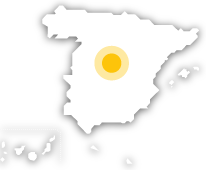
Eight witnesses to the history of the capital
Walking around the city you will surely have seen a metal plaque designed by Mingote with the following phrase: “The Council of Madrid is grateful for your services to the City”. This is their recognition of the establishments that have been providing their services to the city for at least 100 years. These businesses have aged well, have passed the test of time and remain in fashion; they have witnessed history and are true icons of the city. In the modern, dynamic and evolving streets of Madrid, these places remain frozen in time.
-
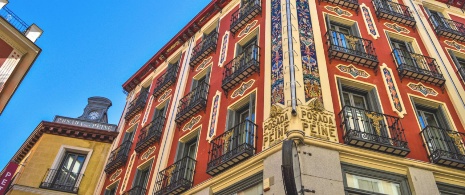
Posada del Peine (1610). Calle Postas, 17
The oldest hotel in Madrid and probably the oldest in Spain. It opened in the 17th century to provide accommodation to guests and foreigners who arrived at the Court, making the most of its proximity to the main coach stop. It has undergone numerous refurbishments and changes of ownership, experiencing times of splendour as well as hardship and abandonment. In 2005, it was reopened and converted it into a “Petit Palace”, an authentic, charming hotel right in the centre of Madrid.
-
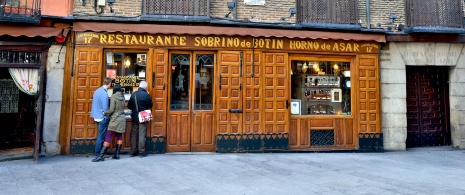
Botin (1725). Calle Cuchilleros, 17
It is said to be the oldest restaurant in the world, and until today nothing has proved otherwise. This fact earned it a spot in the Guinness World Records, where it also states that around 1765, Francisco de Goya worked here washing dishes. This restaurant was opened by a French chef named Jean Botin and his Asturian wife, was then passed on to his nephew and is currently run by the fourth generation of the family. The environment of the original inn and its wood-fired oven, where they continue to roast their specialities of suckling pigs and lambs, are preserved across the four floors of the restaurant.
-
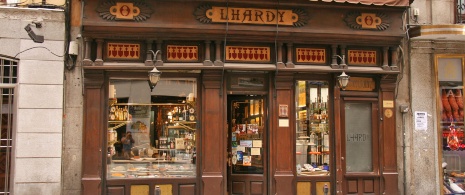
Lhardy (1839). Carrera de San Jerónimo, 8
It opened in 1893 as a bakery and shortly after became one of the first stylish restaurants in Madrid. Political and intellectual figures would meet in its dining rooms, making it the most mentioned restaurant in Spanish literature. Walking through the mahogany façade transports you back to 1880 when decorator Rafael Guerrero gave it an Imperial style that has been preserved to the present day.
-
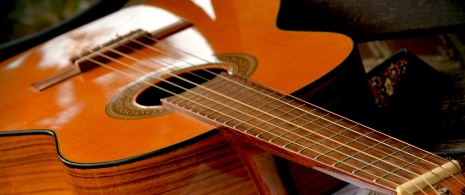
Guitarras Ramírez (1882). Calle La Paz, 8
This shop was opened by José Ramírez de Galarreta y Planell, one of the greatest guitarists of his time, and was a precursor to the Escuela de Madrid de Constructores de Guitarra. His descendants continue running the business, which is now in the fifth generation. This workshop, which retains its original appearance, became famous for inventing the tablao guitars that solved the sound projection problem faced by flamenco guitarists.
-
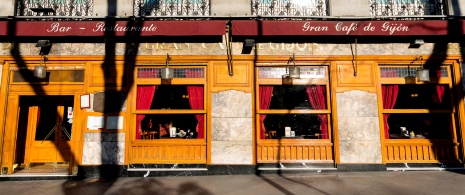
Café Gijón (1888). Calle Recoletos, 21
When the Asturian Gurmesindo Gómez returned from Cuba he moved to Madrid and opened a café that he named “Gran Café Gijón”, in honour of the city of his birth. It ended up becoming the last literary cafe in the capital: it has been graced with the presence of figures including Pío Baroja, Fernando Fernán Gómez, Francisco Umbral and Camilo José Cela. Its literary gatherings have also become a reference and icon for writers and intellectuals.
-
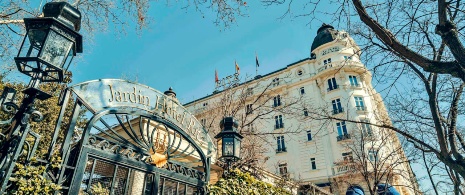
Hotel Ritz (1910). Plaza de la Lealtad, 5
The Spanish monarch at the time, Alfonso XIII, ordered the construction of the Ritz knowing that Madrid could not become a large European capital without an internationally famous luxury hotel. This reference of aristocratic sophistication was constructed by Spanish architect Luis Landecho in the Belle Époque style. Kings, Presidents, magnates, film stars and an infinite number of famous people have passed through its doors since it opened, making it an historic symbol of exclusivity.
-
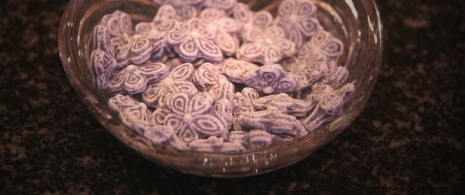
La Violeta (1915). Plaza de Canalejas, 6
This traditional family sweet shop takes its name from the famous sweets made from violet essence, which are considered to be one of the most typical sweets in Madrid. Such was its fame that there were rumours at the time that King Alfonso XIII used to give them to his lovers as presents. As well as these super-famous sweets, it is also known for its natural candied violets, assorted sweets and chocolate bombons, which are all handmade. La Violeta reflects tradition with its wooden façade, curved glass shop windows, classic display cases and the impressive chandelier that lights up the inside.
-
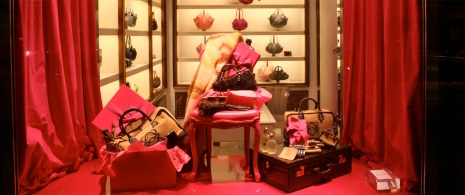
Loewe (1939). Calle Gran Vía, 8
The legendary fashion brand started its journey in Madrid. The German craftsman, Enrique Loewe Roessberg, opened his small leather workshop in Calle Lobo, now named Calle Echegaray. After operating out of different locations around the area and becoming known as the supplier to the Royal House in 1905, it ended up being based out of Gran Vía, 8. Today, the shop is one of the best known luxury brands with a Spanish stamp and Loewe’s first steps have not been forgotten as the original aesthetic and architecture have been preserved.
-
Travel plans for inspiring you
